- | 9:00 am
Athletic recovery is a booming business. This CEO has plans to make it an even bigger part of sports
Hyperice CEO Jim Huether talks about his plans to make the $850 million company an even richer part of sports and wellness.
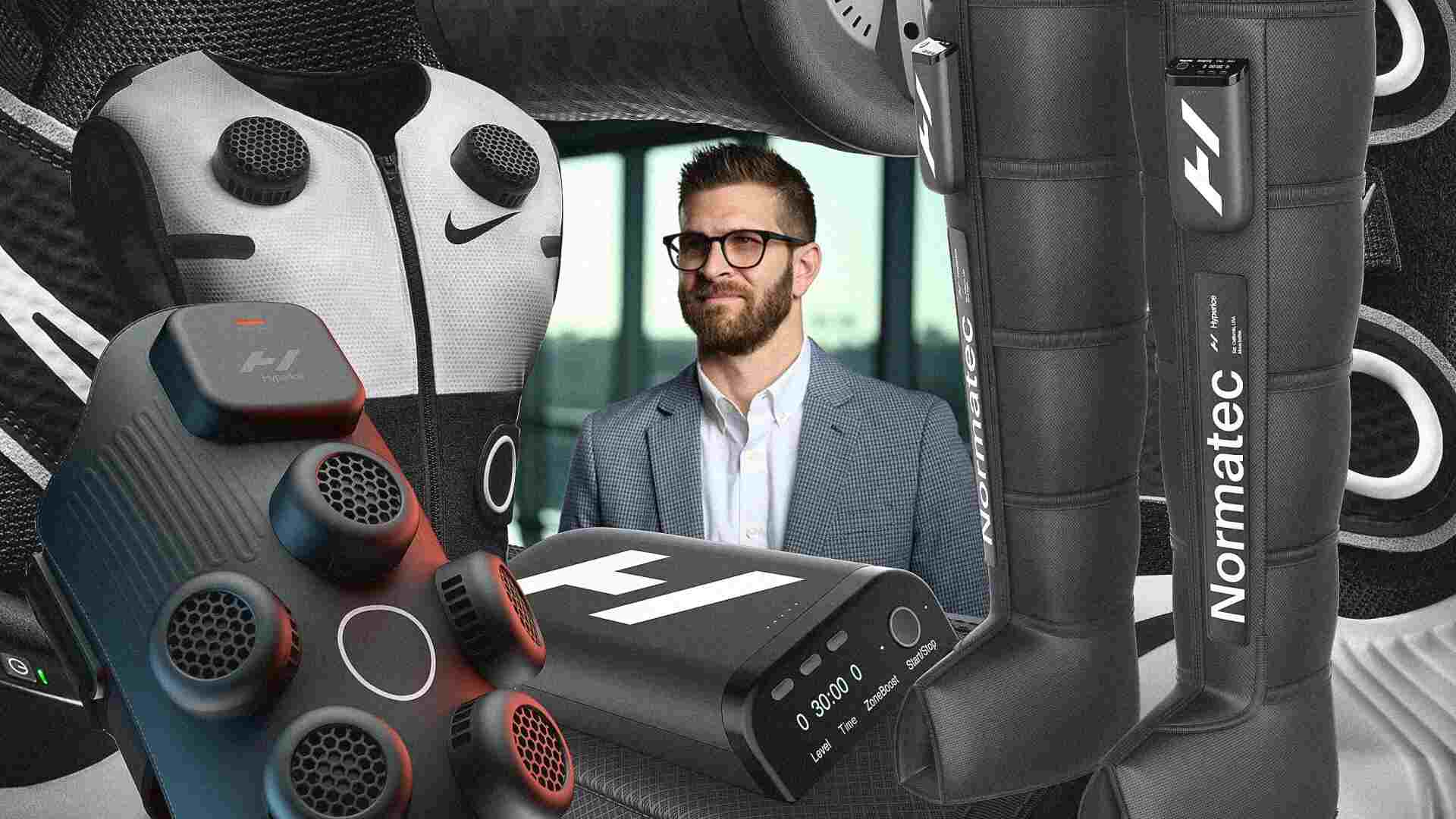
Deep tissue and trigger point massage. Dynamic compression and circulation. Cold and hot contrast therapy. These are the tools of the modern athlete, to not just get stronger during exercise, but to warm up before and recover after a workout.
Hyperice is one of the world’s leading purveyors of the gear to make this possible, selling a range of electronic braces, rollers, and even full leggings to treat your body’s soft tissue. The private company is now valued at $850 million, and its ambition isn’t waning. This year, Hyperice partnered with the world’s largest sports apparel company, and debuted a prototype for a new circulation boot and cool/hot vest developed alongside Nike. It was tested at the Paris Olympics.
So what’s next? In a discussion with Hyperice CEO Jim Huether, he delved into the company’s upcoming product roadmap, and his ongoing reverence for the Swoosh. But most of all, he detailed the careful balance of Hyperice moving forward—to be a brand anchored in elite performance, but still accessible to people hoping to just be a bit more active and a bit less achey.
This conversation has been edited for length and clarity.
Me? Oh, actually, feet! So feet for me. I coach my son’s football, and he’s seven years old, so it’s just flag football, but I’m out running around like crazy with them. And so I use two products. I actually am using the Nike Hyperice boot quite a bit. I’m fortunate to have one of the only 250 units that exist right now. And then also an old-school product of ours called the Vyper.
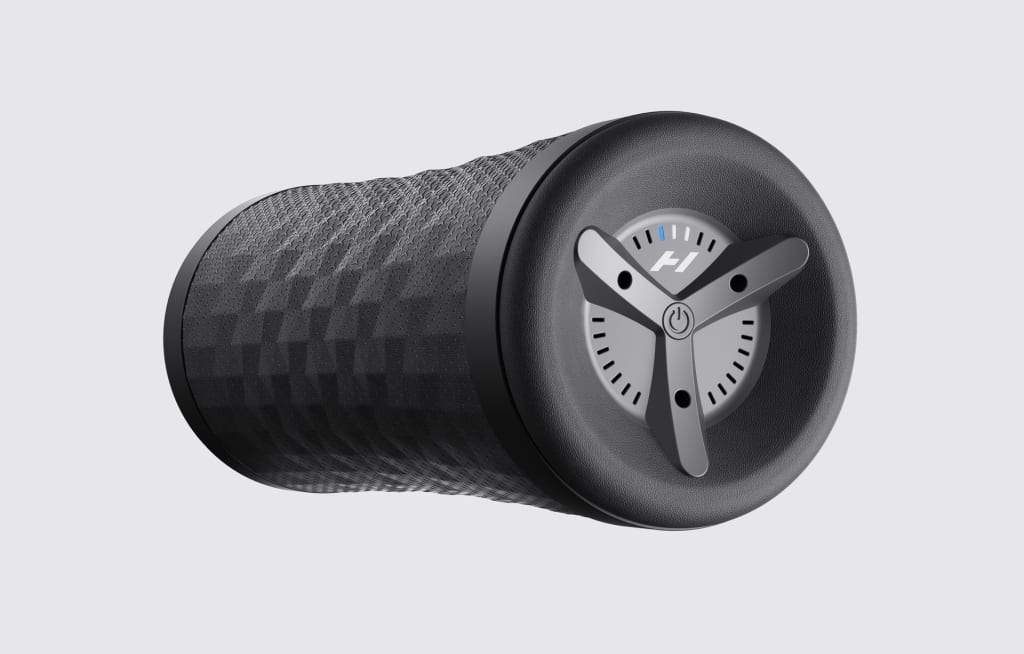
For the past few years, Hyperice has been in this massive expansion stage with lots of acquisitions. What’s the key focus of the company right now?
We focused in 2020 a lot around some key acquisitions, and we did some big marketing deals to gain awareness with the leagues. We partnered with the NFL, NBA. They came in as investors. We brought on a myriad of all types of athletes—Erling Haaland, Patrick Mahomes, Naomi Osaka, Fernando Tatis—as shareholders and investors. That period of time for us was really about brand awareness, to get people to understand recovery.
This space was really new, and we wanted to kind of cement our position as the leader in high-performance wellness. I think where we are now is really product development and innovation. That’s the core and DNA of this company. We’ve always been really connected to performance and longevity and listening to the athlete and listening to the experts and understanding the science. We take a lot of inspiration from Nike and Apple. Nike on the aspirational side and Apple on the technology innovation side. There’s a combination of those two companies that are in our DNA, and a little bit of Tesla too, with some of their technologies.
I’d say your marketing approach, looping in a lot of athletes, reminds me of Beats’s original launch, getting headphones onto the heads of NBA players in the pregame, advertising that way.
Totally. Our athletes are already using the products organically, because these are helping with performance and longevity. I’ve been in the health tech space now for 20 years. And been with companies where you have to pay athletes to wear your product, and it’s really hard to get people to wear it. And, you know, you pay them to do photo shoots or marketing shoots, and sometimes they really don’t want to be there. This is easy because these products are naturally in every training room. And you can actually have people use the products in-game.
So Beats, great example. I mean, they wrote a marketing playbook that is iconic and will be used for years, but you can’t wear headphones during an NBA game. You can use a Hypervolt in an NBA game. At the MLB playoffs, you can see them in the dugout right now. So there’s a lot of advantages to products like this that are enhancing performance in game, that allow us to kind of advance our marketing playbook and show up on TV and really unique places and gain that brand momentum.
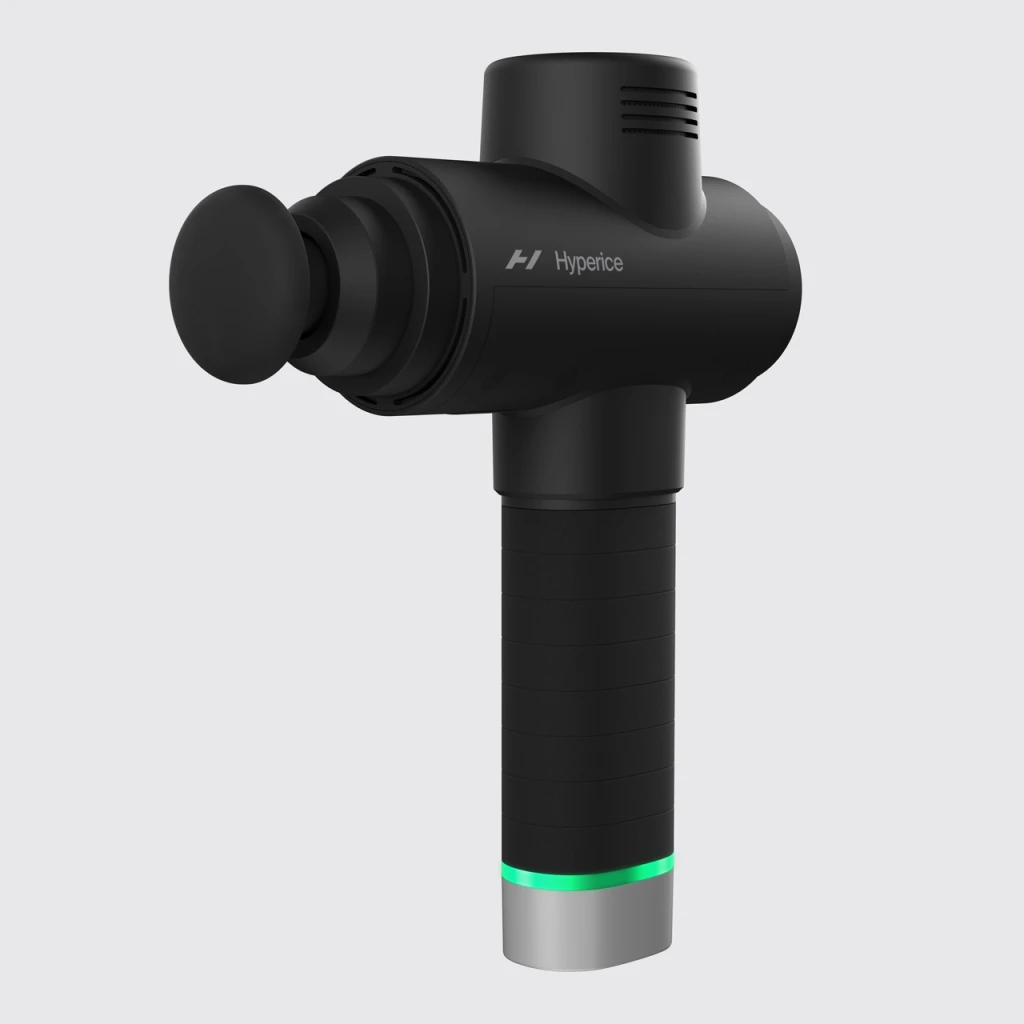
In other words, the awareness is established. So it’s time for more innovation?
People understand that this is a company that’s closely connected to athletes, and our innovation roadmap moving forward is stronger than it’s ever been. I’ve been with the company for almost 11 years, and it’s always been a priority. But we have, you know, four innovations we’re launching next year. Another three to four, launching in 2026.
So about eight new products? And are these totally new products, rather than updates to existing ones?
Yeah, expansive products. And actually new categories. And when you think about the Nike and Hyperice boot, that’s a completely new category for us, right? And so as we look at the innovation roadmap, and we think about our company’s position around innovation, that is of the greatest importance.
Let’s roll into Nike since we keep talking about it! I was on campus earlier this year, where I was probably the first journalist to try out your boot and vest developed in partnership with them. During a time when Nike took a lot of flack for lack of innovation, they were interesting produces! I’m curious what this partnership brings to Hyperice, and what it’s like working with them.
The products that you saw were both in product development for over two years. So the companies have been going back and forth—us to Nike’s campus, them coming to us. Our engineering teams have been working together for quite some time.
Our commonality is that both of us are relentlessly focused on the athlete. And we also had worked with Nike and a lot of capacities. We have recovery rooms on their campuses for their employees. Anthony Katz is the founder of Hyperice, and he had a good relationship with Kobe Bryant in the early stages. Kobe helped on product development on our first product. We named the company Hyperice, inspired by Kobe Bryant’s Nike Hyperdunk shoe.
So there’s always been this connection between the two companies that’s authentic. And so it just made sense for us to unlock innovation and find a product that we could do collaboratively together. And when we looked at what Nike is really known for, it’s, you know, innovation around footwear. That’s one of their really key strengths. And for us, on the product development and technology side, heating and compression were two categories of growth for us that we’ve, really done exceptionally with. It just made sense for us. So we think there’s an enormous opportunity with this product.
The boots look big but they are really quite light. Like a far more comfortable ski boot.
We’ve had a lot of feedback over the years with our products on the recovery side about, how do we address the foot in a meaningful way? The dynamic air compression and heating advances recovery and warm up, but also feels really good. We put these on 250 athletes in the Olympics, and the response was just mind blowing.
We had athletes in Paris who came up and said, “Hey, I’m taking these.” And I’m like, “We only have a few!” So demand already from the athlete community has been exceptional. And we think this opens up a whole new category of opportunity for Hyperice and Nike to be disruptive on technology and footwear as it relates to electronics.
Well it’s a recovery product you can wear while living life. It’s portable. That feels key. Will we see it on the market next year?
We’re still working on the athlete feedback, but, yeah, we expect it to hit the consumer market next year.
Three words you used earlier stuck with me: high-performance wellness. I get focusing on the elite athlete for inspiration. But I wonder how much you are considering the more general wellness and aging market.
It’s really important. The real target market for us on products we’re selling is to consumers like you and I, who are right in the sweet spot. The athletes are core for us in the DNA of the company. But when you look at what that represents from a revenue perspective, our athlete populations only represent 10% of our overall revenue, 90% is the rest of us, the general consumer.
Again, a parallel to Nike, where technologies like Air become lifestyle shoes. But beyond you or I, I think people in their sixties, seventies, and eighties might be the target for many of these technologies around circulation.
There is a whole medical and rehab extension to the business that’s really important. And we look at Normatec, that company we acquired in 2020, that was a medical device that was actually used for rehab, post-cancer, for patients to enhance circulation and blood flow. And it kind of adapted, over time, into a product that also addresses performance as it relates to recovery and circulation. So I think there’s a huge, huge opportunity for us in physical therapy, rehabilitation for all of the age demographics.
I ask that because, while your products qualify for HSA/FSA funds, I look at how the entire headphone market is repositioning itself as over the counter hearing aids. And that allows them to be purchased with insurance money. It feels like you have a similar potential growth strategy.
Obviously there’s challenges in the healthcare market. It takes some time and energy, but it is something that we’re working on. We actually think if people are using our technology and they’re doing the things that enhance their longevity and recovery, post rehab, or whatever it may be, we think that there is a long term play around longevity there.
“Body maintenance” is the term that we’re using internally. So we think of three buckets: warm up, recovery, and body maintenance. And eventually our vision here is much like brushing your teeth every day. You’re conditioning your soft tissue, right?
So it’s something that I would say we’ve been working on, and it’s a focus over the next five years. But as you know, it doesn’t happen overnight. Though Normatec is a class two medical device.
Your company is thriving in part because of life optimization, and renewed attention on peak training, diets, sleep, and supplements. I feel like we’re starting to see the negative impacts of this—people get anxiety around imperfect sleep, others lament they can’t afford to do more. It’s like FOMO for longevity. What is your role in culture?
I think longevity is a huge buzzword right now. There’s equal attention around the word “longevity” as there is “recovery.”
I think we can play a critical role in that. And when you look at LeBron James, he’s defying Father Time. He’s 39 years old. He’s playing at an unbelievably high level, still one of the most dominant players in the league, and it’s widely known that he spends over a million dollars a year on recovery and wellness, right? He’s been doing it now for quite some time, and that’s preventative things, that’s recovery, that’s high performance things, but he’s investing in his body so that he can continue to do the things that he loves for a long period of time, right?
We think if we can help people move better, we can help people live better. That’s a huge part of our mission.
But do you worry about adding to longevity FOMO? Continuing to the negative side of this optimized wellness era?
I don’t think [longevity] has a negative connotation right now. I think that the word longevity has a positive connotation. I think people are like trying to get the most out of life, live life to the fullest.
My background prior to Hyperice, I worked in the sports concussion space. It had a very negative connotation. People would talk about helmet technology. And sometimes people were like, “I’m checking out of football. I’m not going to play as a youth player.” But longevity, I don’t think has that.
You currently have a product, a haptic ball, that helps you meditate. How much is mental health part of your future product strategy?
I would say that physiology is more of our core focus moving forward, but we felt that what we term as mental wellness was a part of physical wellness.
It’s not been a huge part of our revenue at all, candidly, but it’s an important product because it represents that we know that the mental side of wellness has an impact on your physical wellness, and that’s the reason we address that. Naomi Osaka and Rory McIlroy were both athletes in our shareholder base who were investors in the company, and they also felt really strongly about the impact Hyperice could have on mental wellness. And so we felt it was a good product within our brand to kind of drive that vision.
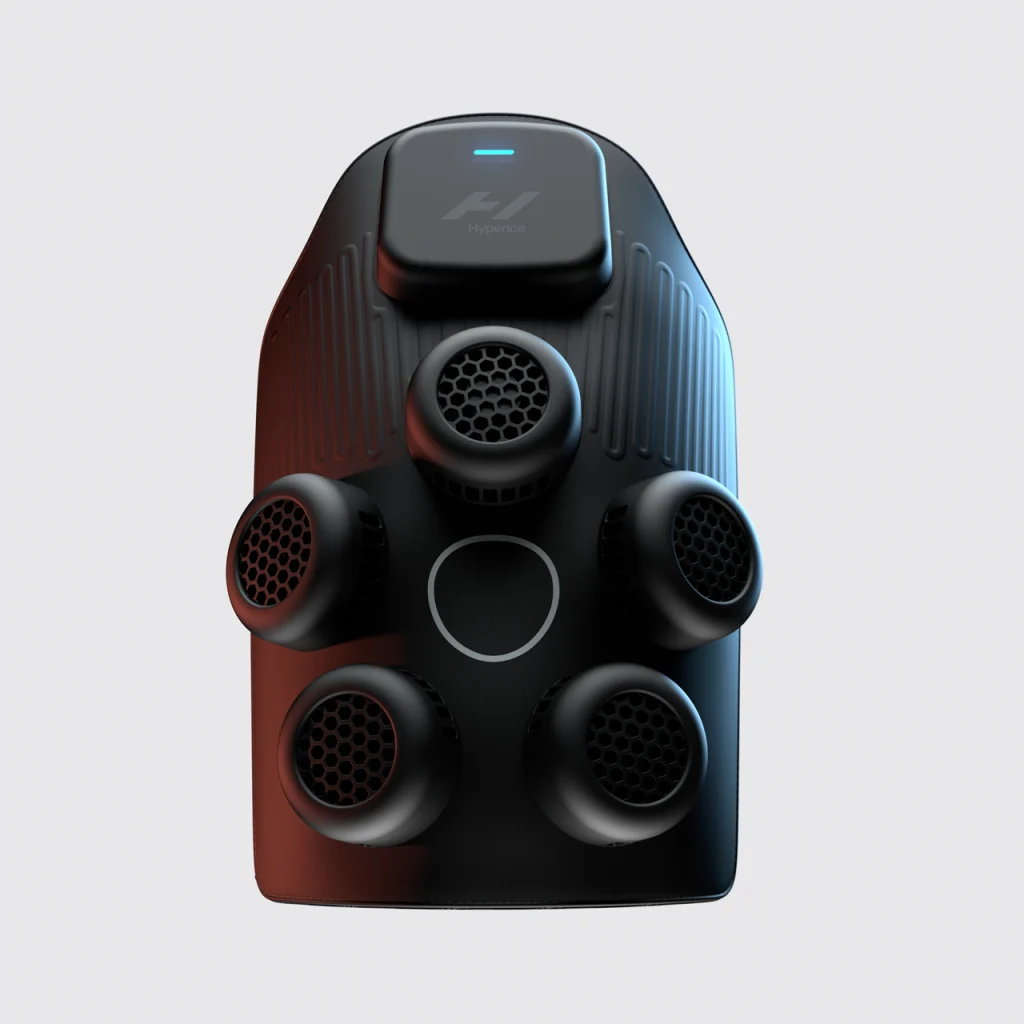
What are your bread-and-butter products? What’s driving revenue now?
We look at our business right now as different modalities as categories. So we have thermal technology, which is our Venom product, that’s heat and vibration. We have contrast therapy, which is heating and cooling. That’s the Hyperice X. We have dynamic air compression with our Normatec line. In those categories—heating and cooling, and compression—there’s really been an unlock by combining them.
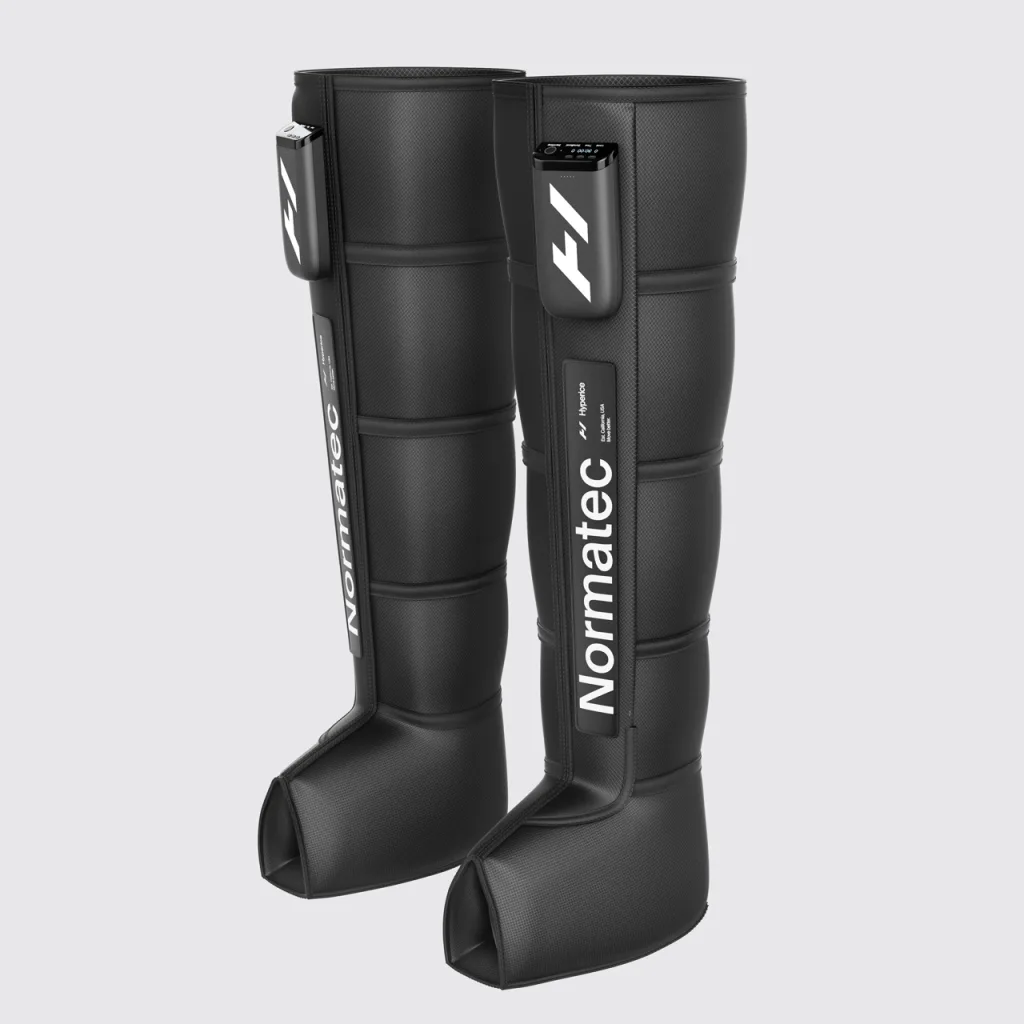
It’s created an exponential effect. And you see those and when you think about the company strategy on the business side, we’ve made some key acquisitions along the way. We acquired Normatec in 2020 which is a huge acquisition for us that allowed us to be the leader in dynamic air compression. We acquired a company in 2021 called RecoverX, which we branded as a product Hyperice X, which had some really key technology around heating and cooling that was very advanced. We actually used those two technologies in the Nike Hyperice boot.
What we did here wasn’t just acquiring a company for a product. We combine those engineering teams. And it was kind of a cross pollination of a bunch of amazing engineers that we put together, and it has had this exponential effect.

Hyperice products do have a certain tech factor, but they don’t have an expressive language like Nike.
I would say that we do feel like the Nike boot makes a fashion statement, when you look at all the tech that’s packed in the heel. There are people calling them space boots, and we feel like there will be a fashion element to them. Because you’ll see people walking around in an airport, wearing your sweats or whatever, and the shoes will stand out for sure. I think if you look at the vest, that is a little bit more Iron Man-esque, right?
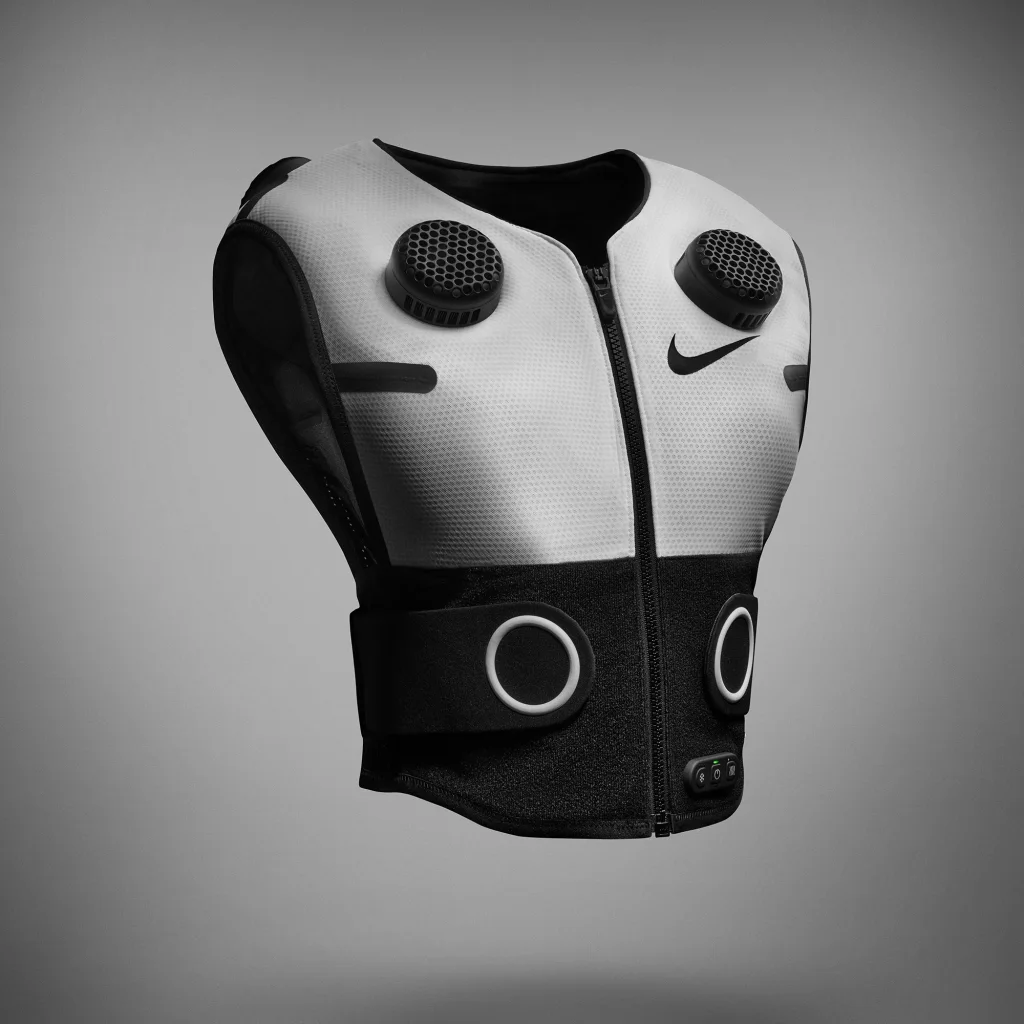
If you stuck some LEDs on the cooling fans, they’d look like arc reactors.
Yeah! (laughs) And we actually thought about lighting up the boot in the back, but unfortunately, we were limited in space.
I do love some LA Gear.
I do, too.
I’m curious to see where this all goes next. Especially with your connected AI platform, Whoop, which seems like it will make all of this worn technology more sympathetic.
We are thinking about AI hyper personalization, seeing people’s data and then prescribing products and technologies after activity.
I would even imagine, long term, this all means my clothes just make me feel better. Like, to me, that’s the end state of all of this. I don’t know if that’s 10 years, 20 years or 100 years, but when I put on Apple Watch, it tracks my biometrics and controls all my clothes to make me Superman.
Exactly. Yeah. That’s it.





































